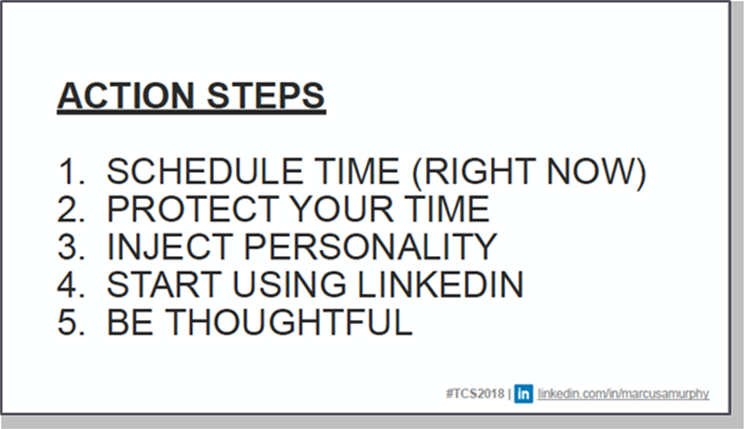Marcus Murphy
Marcus Murphy is the Director of Sales & Monetization at DigitalMarketer. Marcus is a sales expert who cares deeply about the flourishing and success of entrepreneurs. Marcus has worked for Yelp in San Francisco, going from start-up to multi-billion dollar giant. He has also worked at Infusionsoft as the Global Partner Development Manager where he developed & broadened new international markets through strategic partnerships.
In today’s marketing and sales world, it seems like prospecting has become an obsolete art practiced by very few people in their everyday business.
There are a lot of myths and stereotypes about prospecting that steer marketers away from it. The truth is that prospecting should be a part of your daily activities on your sales team because it can help boost your sales and conversion rates. In this article we’re going to cover why you should be prospecting, what’s success with prospecting will look like, the golden rules of prospecting, prospecting tools, and overcoming roadblocks. Most of that roadblock is you.
Why Do We Hate Prospecting?
When most people think of prospecting, they think of the sleazy untrustworthy used sales car type of people who end up turning customers off rather than converting them. Most businesses have an inbound marketing methodology. They build funnels, they build pages, they know what trip wires are, they’re doing all this cool stuff. They’re nurturing their Pipeline and then people pop out the bottom and they become a customer.
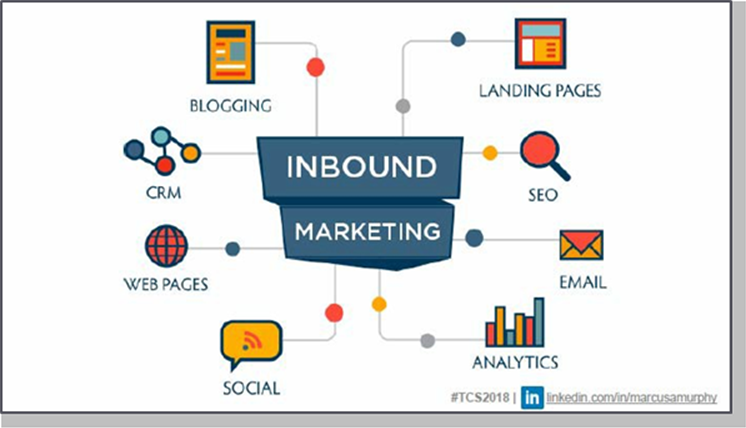
That’s why a lot of sales people aren’t doing prospecting today. Instead of having this mindset as a salesperson that you’re already doing enough, you should be following this rule of thumb, you always: “in addition too, not in lieu of.” Don’t stop any successful inbound marketing strategies you already have and replace them with prospecting. Instead think of prospecting as a bonus marketing strategy that can supplement your already awesome way of doing things.
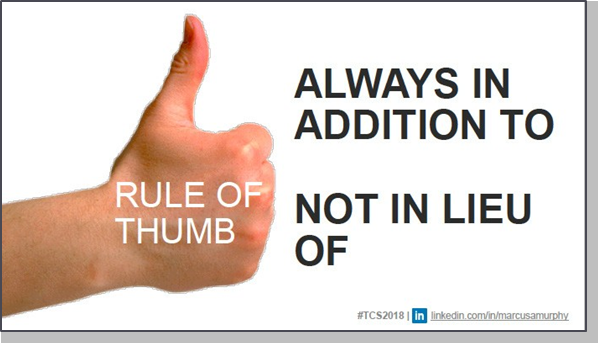
The best salespeople have a secret. They keep their pipelines full at all times, that’s the secret. At some point there will be a depression. When that happens, there will be people who prepare, and people who don’t. How are you going to actually get prepared? This is how you get prepared.
When times are bad, you prospect. When times are good, guess what? You prospect. There’s and ownership mentality now.
Ending the war between sales and marketing comes down to one word— ownership. Nobody on your sales floors should sit there and point the finger at marketing. In most businesses, there is often an ongoing feud between the marketing and sales departments with one placing the blame on the other for low conversion rates and revenue. If you can create the ownership in your teams prospecting becomes a big part of that because you’re not waiting around for a lead. If you want more leads you need to have your teams embrace this idea of ownership, and the fact that the hunter mentality is a part of that ownership.
Seven Mindsets of the Fanatical Prospector
- Be enthusiastic
- Become unbelievably competitive
- Always be wildly confident, but not cocky
- Relentlessness is key
- Have a thirst for knowledge
- Be as efficient as possible
- Become adaptive
The Golden Rules of Prospecting
By following these golden rules of prospecting, you can get a jumpstart on
your prospecting journey and start bringing in those sales.
#1 Block Out Your Time
Learning how to block out your time is essential to effectively putting prospecting into practice. Using Parkinson’s law can be a helpful tool when blocking time. As humans, we naturally pace ourselves to finish a project in the nick of time. Don’t give yourself five hours to prospect, don’t do it, because if you give yourself five hours to prospect, you’ll never do it. If you give yourself one hour to make 20 phone call, it’s more than likely that you can make 25 instead. If you give yourself one hour to be able to send out 20 emails, or 30 emails, you’re going to get it done. If you start to elongate the amount of time you give yourself, the procrastination starts to happen. Not only does procrastination start to happen, so does Parkinson’s law, because if you give yourself to much time you’re going to miss it.
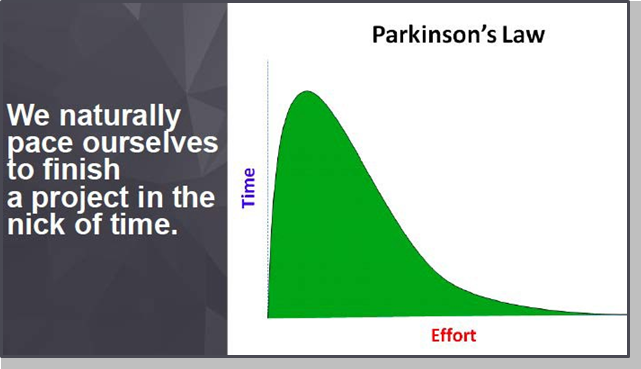
It’s important that you learn how to protect your time. That means you have to literally turn off the email, get out of slack and any other tools that are sucking your time and focus on the task at hand—prospecting.
#2 Are you willing to go where your prospects want to have the conversation?
Cold calling is an outdated way to have conversations with your prospects. Today, people want to be engaged on online on social platforms. You can’t forget about the phone but you have to make sure that the phone isn’t the only vehicle of communication you’re having with your prospects. You have to be willing to go where your prospects want you to go in order to have the most effective and meaningful conversations with them.
So, is cold emailing dead? Do people reply? Is cold calling dead? Cold calling and emailing is dead in the sense that you are a stranger trying to reach out and sell people you don’t know something. One thing that you can do to make your cold calling efforts more effective is to get really good at leaving voicemails. Most people don’t pick up the phone because they see an unknown number calling. But what they will do is listen to a voicemail. SMS is also a great strategy to use in lieu of cold calling. Texting is one of the most unbelievable avenues of prospecting because you’ve figured out a way to get directly into people’s phones, something that’s intimately attached to them
at all times. Both voicemail and SMS messaging offer a bit of thoughtfulness that the old ways of cold calling and email didn’t.
#3 Inject personality into your outreach
If you don’t put anything into your outreach that makes it personal, and vulnerable, and human, you are not going to get people who want to respond to you because you are not a human to them. Human to human. Not B to B, not B to C. It’s human to human, hand to hand combat, and you absolutely need to be good at it.
You have to inject personality but since you might have a problem with that, there are platforms to help you. Loom is an incredible platform for a variety of reasons. For example, if you’re not able to get back to a prospect and they won’t get back to you, it can cause a confusing situation. With Loom, you
can record yourself along with your screen so you can inject the personality in there. By injecting personality and creating a personal video for your prospect, you can help them figure out things they were confused on and ease their mind. That personality is exactly what your prospects need to be like you know what, you’re not just another person trying to email me or send me a phone call.
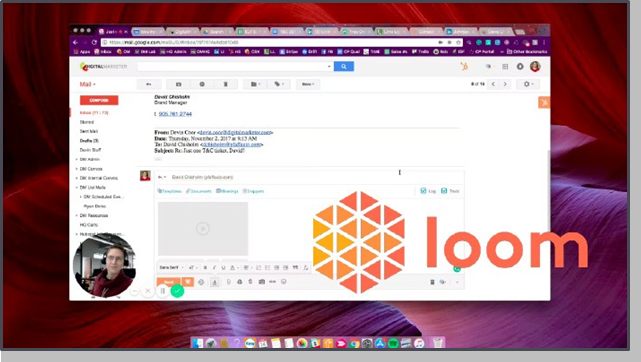
Another great personalization tool is GetAccept.
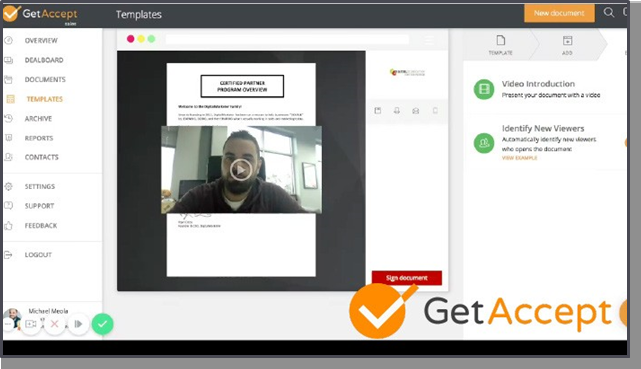
The more personality we inject into our outreach with prospecting or anything that we do, we are 100% going to see that people will make a human connection, which they are more inclined to reply to.
#4 Be thoughtful and do your research
Did you know that you’re missing 80% of your leads if you are not marketing your business online and you’re not active on Linkedin. Studies shows that 80% of B to B leads come from Linkedin and 94% of B to B marketers use Linkedin to distribute content. 80%, 84%, on average 46% of social media traffic coming to B to B comes from Linkedin. Why is that? Well, because 530 million people use it, and 200 countries, 2 new members join the network every second.
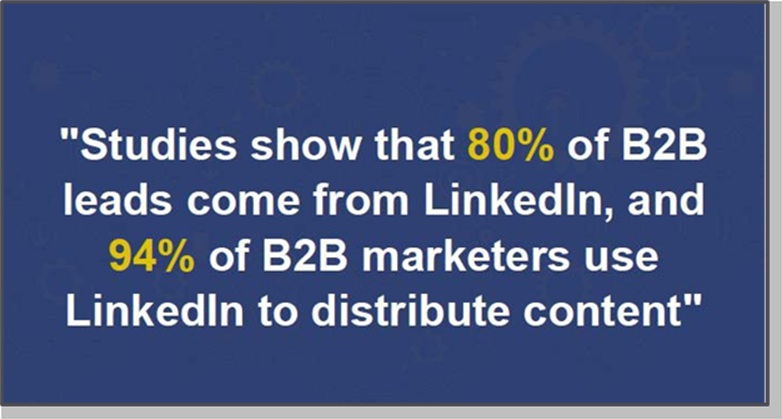
In order to successfully reach your prospects, you need to be thoughtful and do your research as to where those prospects are coming from.
#5 ABC (Always Be Connecting)
How many emails do you get in a day? About 95 thousand. The average person gets so many emails that it’s hard to cut through the noise. Do you know how many InMail messages people get on an average basis per day? Three.
When it comes to email, you are most likely getting rid of all the emails that are in your inbox that you don’t need, that are not important, or that are prospecting emails from people you don’t care about because they didn’t put any personality in there. With InMail messages, it’s disruptive.
Jeff Weiner is the CEO of Linkedin. He said, “I get thousands of InMail messages a day, people prospecting me personally.” He has 7 million followers on Linkedin, but he said the one thing that people do is they’re very thoughtless, they don’t think about his themes, what’s important to him. They’re always leading with this is who I am, this is my product. They don’t go, “Hey you know what I saw what you were doing and this is exactly what my product can do, do you have any time that we can connect this because this is the result I think we’re gonna get.” It’s a very different scenario in terms of outreach. It’s something to think about when the CEO of Linkedin is saying that he would buy more stuff from people if they would just do a little bit more research. There’s too much information out there not to be thoughtful
InMail Messaging
When it comes to InMail messaging, the number one rule is don’t be creepy. InMail messaging doesn’t have to be weird, it can be very conversational.
Don’t just write the same person hundreds of messages if they don’t respond. You need to be able to inject personality into each of your messages and thoughtfulness, and that will increase the likelihood that a prospect will respond.
Here’s an example of effective an LinkedIn InMail message that takes the time to look at the personal details of the prospect’s profile and life, and flawlessly integrate them along with some personality and humor into the message.
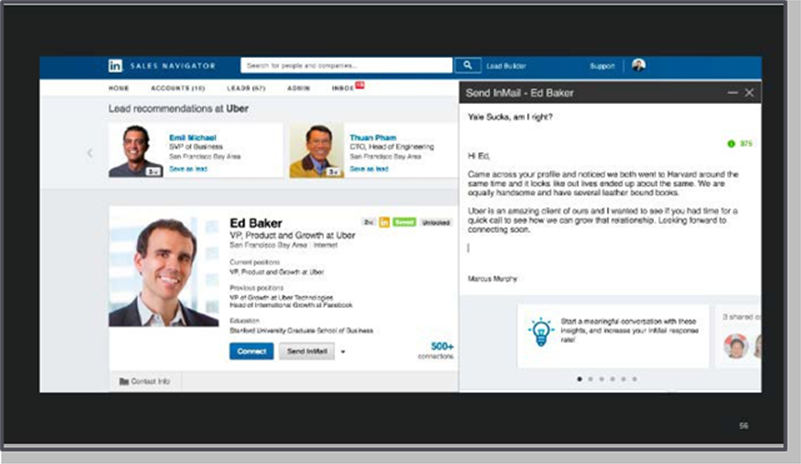
Prospecting on LinkedIn
Sales Navigator
If you’re on Linkedin and you just have a Linkedin account you’re very limited, you can’t send a lot of in mail messages. On Sales Navigator you can get in here and you can start to get advanced in the search criteria. You’re looking for things, going in there and you’re like “you know what, I’m looking for agencies because we have a big agency initiative, I’m looking for agencies inside of Texas specifically because we are in Austin Texas.” Sales Navigator lets you pick director level or above, and narrow down your search to specific people.
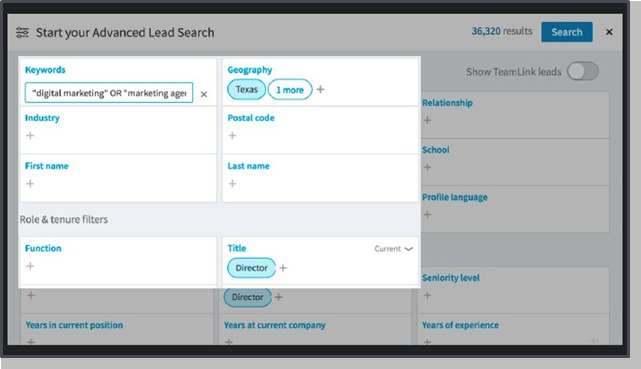
If you’re prospecting on a platform you need to be able to see that people are actually using it. By looking at things like mentions, posts, and
connections you can see how much they’re actually using this platform on a daily basis. If you narrow it down you’re going to want to focus on people that are allowing you to pick your point of entry.
Social Selling Index
Much like Uber’s customer rating, LinkedIn has the same kind of thing that’s called the social selling index. Most people have an average of 50. Why is the social selling index important? The social selling index carries weight and can differentiate you to your prospects from the hundreds of other people trying to connect with them and sell them things. Someone with a higher social selling index is more likely to be seen as credible with a good reputation,
and trustworthy. All of these things are going to help you when it comes to connecting with prospects via LinkedIn.

Point Drive & LinkedIn
They’re are 6.8 people in the buying process and the majority of people are still sending over emails with summaries of information on it including powerpoints and sheets. This isn’t a time efficient or effective way to share and present information.
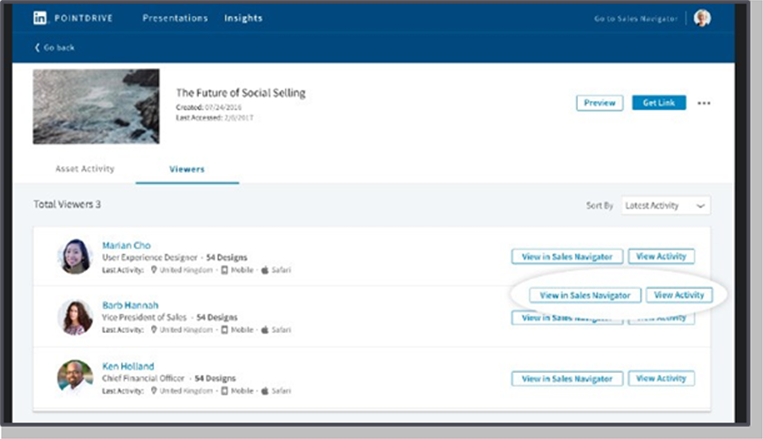
By using Point Drive, you can take every single file that your sales team or yourself uses including decks and sheets and keep it in one easy to use place. Point Drive allows people on your team to go in and look at all those documents and it follows them all around their company. So if somebody looks at it it will show you that there is the person who also looked at it within their company. So now you’ve got a list of all the decision makers that are passing around the information trying to make a decision and you can sit right here and save them as a lead or you can connect with them on the spot.
Bonus Tools
Sales Navigator has a Gmail link where you can look at all the great stuff on the right hand side and it helps you create icebreakers and team links to show you who else is connected to them. It’s a very simple, but very effective tool to have in your sales arsenal. With Sales Navigator, one of the things you can do is make a phone call. If you can see that rate in your email, it cuts through a lot of things like distrust, it also expedites the process. You can connect with people, without ever having to leave your Gmail platform.
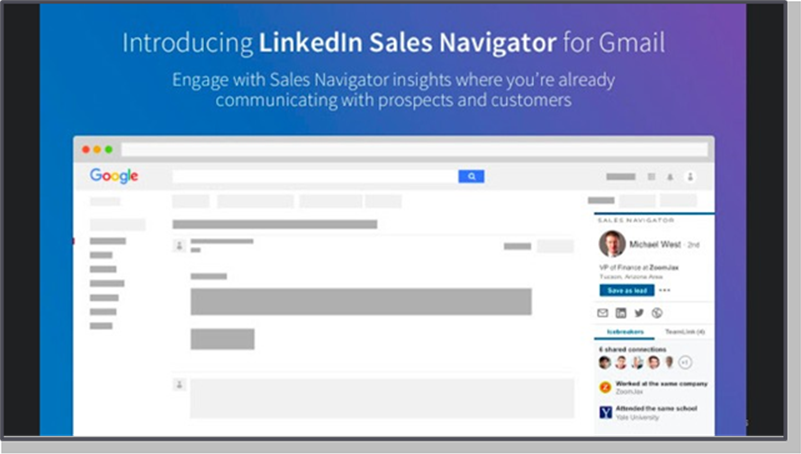
Reportive is the chrome extension that you need to download right now. Reportive is the free version of this, so you don’t have to buy Sales Navigator and instead you can go to the Reportive extension that goes right into your email and it does all the same things for you. It picks up all the information of your prospect including Linkedin, Twitter, and Facebook, and pulls it into your email.
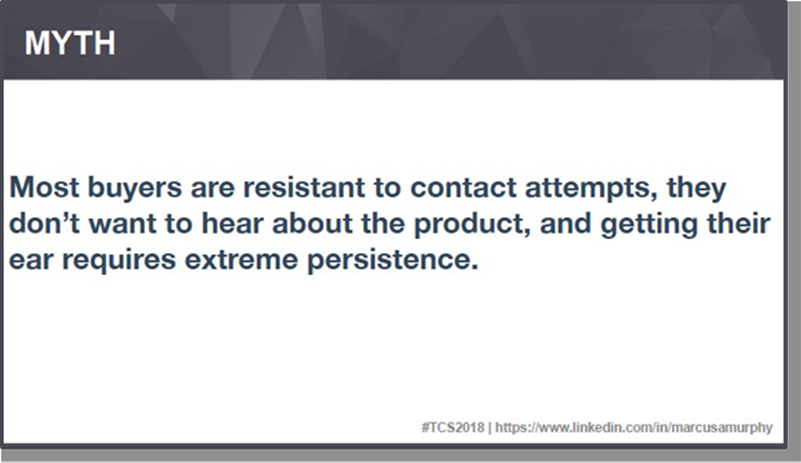
The Myth About Prospecting
The biggest myth about prospecting is that most buyers are resistant to contact attempts. They don’t want to hear about the product and getting their ear, getting their ear requires extreme persistence. Because of this myth, salespeople think it’s going to take a ton of time to prospect and that nobody wants to talk to them. This simply isn’t true.
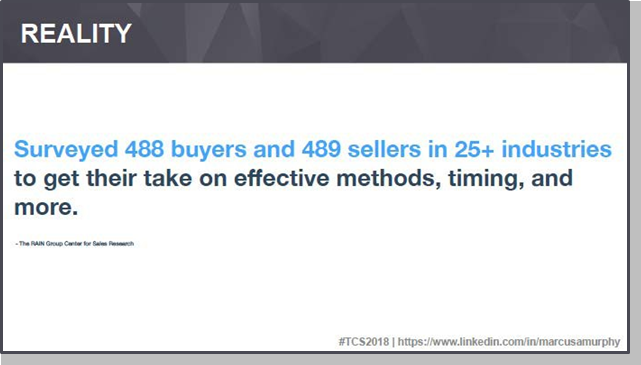
There are a lot of studies including this one, that state the opposite. They surveyed 488 buyers and 489 sellers and 25+ industries to get their take on effective methods, timing, and more. This is what they found out. When do buyers want to hear from sales people? Most prospects do their own research, so know you’re dealing with the most informed buyer group of all time. Sales people assume their not interested in talking until midway through the buying process if not further. That is and unbelievable misconception on the sales peoples part, because sales conversations are moving further up funnel.
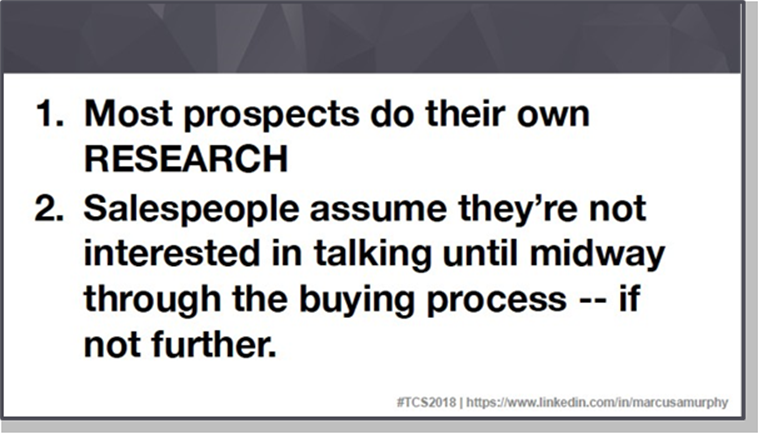
Sales Conversations Are Moving Further Up Funnel
For most sales and marketing teams, their top priority is getting more leads above all else. The problem is that once you start putting your focus on the leads, there’s noone there to push them into the funnel or get them on the list. A lead is just a visitor to a page. You don’t necessarily have any information on who they are or how to get them into your funnel.
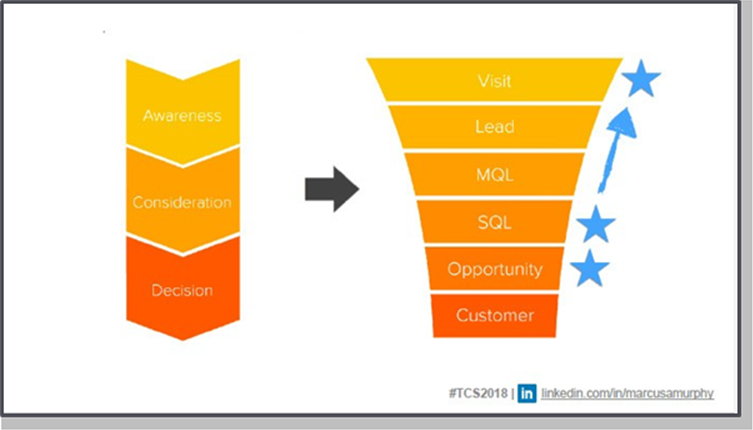
Where you have conversations with your leads is the top of the funnel. There are both bots and human beings that pick up the conversation because that’s what the bot does, it’s preparing a conversation for us.
Do you think that bots are going to replace salespeople? When most people are spending a lot of money and investing in something, they’re typically also investing in the person. Buyers want to hear from reps in the first stage when they are looking for opportunities to improve their business, that’s 71% of the people that were surveyed in that study or they are trying to solve a problem which is 62%. Every single buyer has that same one.
How Should You Reach out to prospects?
8 in 10 prospects prefer talking to reps over email. Half of buyers like speaking over the phone compared to 70% of reps, 70% of sales people don’t want to talk on the phone but 50% of the people do. That increases the higher you go up the ladder. So if you’re a VP or your some like C level person, that actually is unbelievably, astronomically, higher that they want to talk to you on the phone. The phone is scary, it’s not easy for us to want to get on the phone, but we’re missing a major opportunity if we don’t at least use it
Cold calling truly is dead, the phone is not. It is an unbelievable vehicle for business, it is absolutely never going to die. Being able to have the human connection, reach out to somebody and be able to do that, and the higher they are up in the organization they prefer it; according to this study. They also communicate through Linkedin, text, voicemail, and social media. Those are all the ones you want to pay attention to right now because those are the tools being created for our outreach.
What makes a prospect talk to you?
Being likable? No. Its these things. The biggest one is that they need your product or service, second is having budget, and the third one is offering to provide something of value. Value first. The last one is how can you add value?
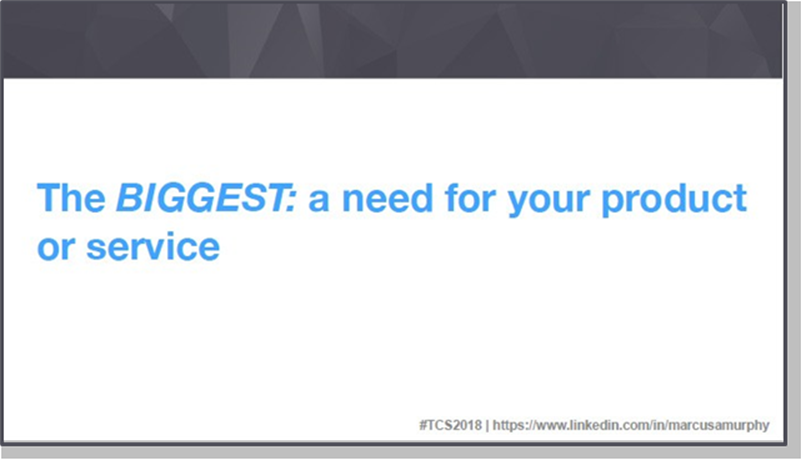

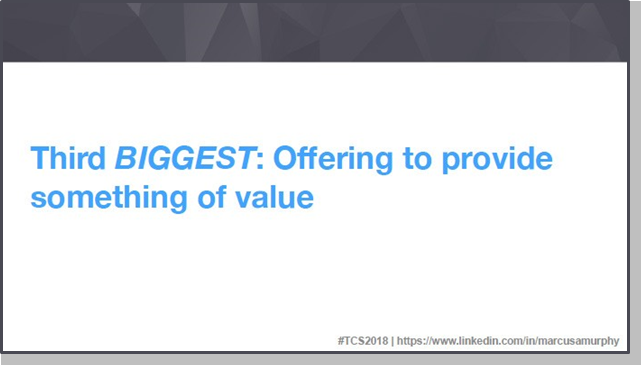

Nobody ever trusts salespeople, because there is a stigma with sales people that they’re trying to steal your money and they’re just trying to swindle you. Data actually tells a story so that other people don’t feel like they’re ripped off and it gives you immediate trust. If you give someone percentages and who them information, they’re going to look at the information and back
it with logic. But if you sell you a story, your prospect is going to love your personality and eventually somethings going to happen. They’re going to buy it and there’s this remorse that steps in. That’s why people turn. That’s why people get out of your company, its because they bought something from you that wasn’t baked by data and in simply they liked you and that wasn’t enough
Lead with insights and trail with those that do. Which one of these is going to set you apart?
Here’s the first option on outreach. Mrs.Prospect, I’d like to meet with you to discuss the competitiveness of your benefits package. We help companies like your create benefits packages that reduce staffing turn over by 31% on average. This is the general tone used by outreach or any sales people. This is what we do, this is what it can do for you. That’s pretty typical.
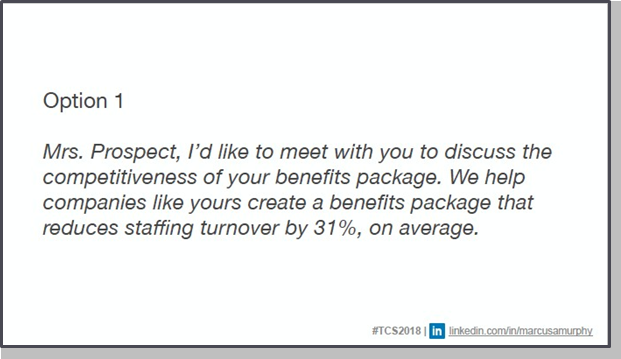
Here’s the one that you should aim to sound like. Mrs. Prospect, I noticed that roughly 15% of your work force took a job with another company this past year, on average our clients reduce staffing turn over by 31% which for a company of your size equates to 525 thousand annual cost savings for recruiting and training. Which one do you thinks better? It’s a no brainer.
Number two is better because it’s personal, data driven, well researched, and thoughtful. People did their research so much that they figured out what’s
important to this person, which is why it’s going to work better than the first option.

Why You Won’t Follow Up With a Prospect
The number one reason why salespeople don’t follow up with prospects is because of procrastination. It’s important, but it’s not urgent. Usually things get done when they’re both, so this isn’t going to like kill your business if you don’t do it but it’s something that you sit around and you won’t do it because you don’t feel like it’s absolutely applicable right now. The effects of doing
it aren’t immediate so they creep up on you, a day might go by, you won’t notice it. A week, a month, two months, when everybody else, all of your competition, everybody else is doing it.
You’ll put it off because you have a big meeting or a presentation or clients. Instead of blowing it off or doing it all at once, try the middle ground. The best prospectors do a little each day. Every single one does it for an hour a day. Front side back side of your day.
Perfectionism, fear of failure, there are a million reasons to not start prospecting today. Don’t make all these excuses, I hear them all the time. The best salespeople know the best time is now. The best salespeople get started. Finally they’re really in love with failure.
Did you know that 48% of salespeople never follow up with a prospect? 48%, all those leads you’re generating, all that really great stuff you do, sales people are mostly terrible at it. They’re going to get up here and they’re going to reach out one time or they’re never going to follow up again. 25% of sales people make a second contact and stop. 12% of sales people only make three contacts and stop and only 10% of sales people make more than three contacts. Only 10%, which is an insanely low number.
Here’s the one thing that’s really insane, 2% of sales are made on the first contact. 3% of sales are made on the second contact. 5% of sales are made on the third. 10% of sales are made on the fourth. This is the one, 80% of sales are made between the 5th and 12th contact.
What Makes You Successful as a Salesperson?
The best salespeople know that there is a series of failures that lead to a yes.
That’s what it really is, a series of failures. You are literally failing your way to a yes, but you give up too soon because you think nobody likes you. A lot of people think that if they’ve reached out three times that’s aggressive. In reality it’s not at all if you’re doing it in the right way. If you’re badgering the witness nobody wants to talk to you. If you provide value and you’re thoughtful and you’re funny, then you will peak people’s interests. You need to start thinking of new ways to reach out to people and start making connections. We have to fall in love with being human again and we have to fall in love with the conversation again, we have to fall in love with being
human again. Today’s strategic, helpful, empathetic, salespeople are the ones win. They’re the ones who are empathetic, helpful, and actually caring and providing value for people.
Wrapping Up
The truth is that you can’t afford to ignore prospecting, you just can’t. And if you don’t want to do it you should hire somebody to do it. Here is the 5 action step plan that if you follow will help you master the lost art of prospecting and turn small conversations into profitable leads.
Your Next Steps:
